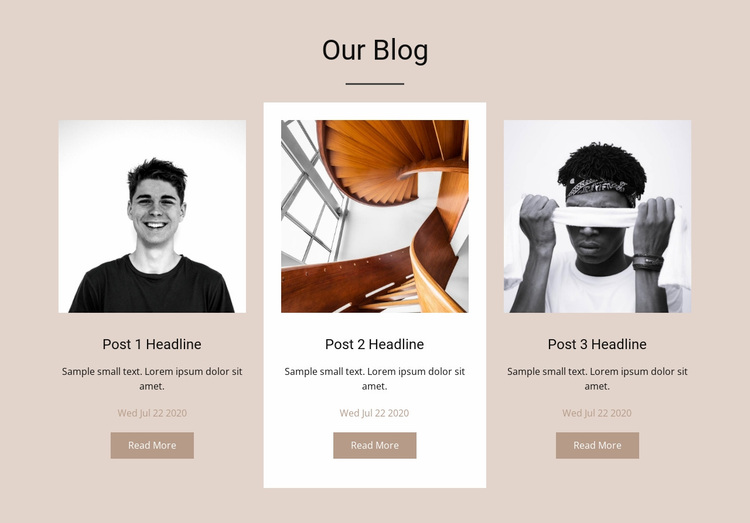Leading Tips for Developing an Impactful Site Layout That Converts
To achieve this, one need to think about a selection of aspects, including comprehending the target audience, focusing on customer experience, and optimizing for mobile platforms. The tactical usage of engaging call-to-actions and a distinct visual pecking order plays a vital duty in assisting customers with their trip.

Understand Your Target Audience
Comprehending your target market is fundamental to efficient website design, as it prepares for developing an engaging customer experience. Identifying that your users are, including their demographics, choices, and actions, makes it possible for developers to tailor the website's content, design, and functionality to fulfill particular needs.
Conducting detailed marketing research is important in this process. Surveys, meetings, and analytics can offer useful insights right into individual assumptions and discomfort points. By compiling this data, designers can create individual characters that stand for different segments of the audience, guaranteeing that layout choices are informed and pertinent.
Additionally, comprehending the target market aids in selecting appropriate style components such as shade plans, typography, and imagery that reverberate with users. A web site that talks straight to its target market promotes a feeling of connection and trust, urging longer brows through and higher conversion rates.
Inevitably, a user-centered approach to site layout not just improves user fulfillment yet also sustains organization objectives by driving engagement and loyalty. By prioritizing the needs and choices of the target audience, a web site can successfully serve its function and accomplish preferred outcomes.
Prioritize Individual Experience
To enhance the total efficiency of a web site, prioritizing user experience (UX) is essential (Website Design). A properly designed UX ensures that site visitors can browse the site effortlessly, locate information promptly, and engage with material meaningfully. This causes raised user fulfillment and greater conversion rates
Begin by applying user-friendly navigation. Menus should be rationally structured, allowing users to find crucial areas of the site with marginal effort. Consistency in design components, such as color pattern and typefaces, promotes familiarity, which is essential for maintaining individual engagement.
In addition, think about the loading rate of your website. A hold-up of simply a few seconds can lead to substantial drop-offs, as customers are much less likely to wait for a slow-loading web page. Enhancing pictures and optimizing code can improve performance and keep site visitors.
By prioritizing individual experience, you not just produce an extra pleasurable environment for visitors however additionally reinforce your brand name's reputation. Eventually, an emphasis on UX is an investment in the lasting success of your web site.
Maximize for Mobile Gadgets
Enhancing for mobile phones is important in today's electronic landscape, where a raising variety of customers access websites with mobile phones and tablet computers. A mobile-friendly layout not only boosts individual experience yet also plays a considerable role in enhancing search engine rankings. To accomplish this, it is necessary to take on a receptive design that immediately adapts to numerous visit this website screen dimensions and positionings.

Packing speed is an additional critical aspect; mobile customers are generally less client and expect rapid accessibility to details. Maximize images and take advantage of internet browser caching to boost performance. Ultimately, test your site on numerous devices and screen resolutions to recognize and rectify any kind of possible use problems. By prioritizing mobile optimization, you ensure that your website stays competitive and efficiently engages a broader target market.
Usage Compelling Call-to-Actions
A web site's performance my link typically depends upon its capacity to lead visitors towards desired actions, making compelling call-to-actions (CTAs) crucial parts of design. CTAs serve as the critical factors that guide users to engage with the website, whether that suggests purchasing, enrolling in a newsletter, or downloading and install a source.
To produce effective CTAs, quality is paramount. Use concise language that clearly connects the action you desire the user to take. Phrases such as "Start," "Sign Up Free," or "Shop Now" not just communicate urgency however likewise get rid of obscurity. The positioning of CTAs is similarly crucial; they need to be strategically positioned throughout the webpage to guarantee they are quickly noticeable, particularly in high-traffic areas.
In addition, take into consideration utilizing directional signs, such as arrowheads or images, to guide users towards these switches. By focusing on these aspects, businesses can dramatically improve individual interaction, driving conversions and ultimately accomplishing their website's objectives.
Concentrate On Visual Hierarchy
Reliable internet site design counts greatly on a well-structured aesthetic hierarchy that overviews users through content flawlessly. By arranging components in a way that prioritizes details, designers can improve user experience and facilitate decision-making. This involves utilizing dimension, shade, comparison, and spacing strategically to accentuate one of the most important parts of a page.
Making use of bigger fonts for headings and subheadings develops a clear difference between various sections, permitting individuals to check content easily. Furthermore, utilizing contrasting shades for buttons and calls-to-action can capture customer interest and encourage interaction. Whitespace is one more necessary component; it prevents clutter and makes it possible for customers to concentrate on key messages without disturbances.
Pictures and graphics need to complement the message while additionally sticking to the recognized hierarchy, reinforcing the total message (Website Design). Uniformity in layout elements, such as shade schemes and typography, further enhances the aesthetic power structure, making navigating user-friendly

Final Thought
In final thought, efficient internet site style requires a comprehensive understanding of the target audience, prioritization of user experience, and mobile optimization. Eventually, a well-executed web site style serves as an important element in redirected here driving user activities and attaining company objectives.
Comments on “Personalized Website Design Solutions for E-commerce Websites”